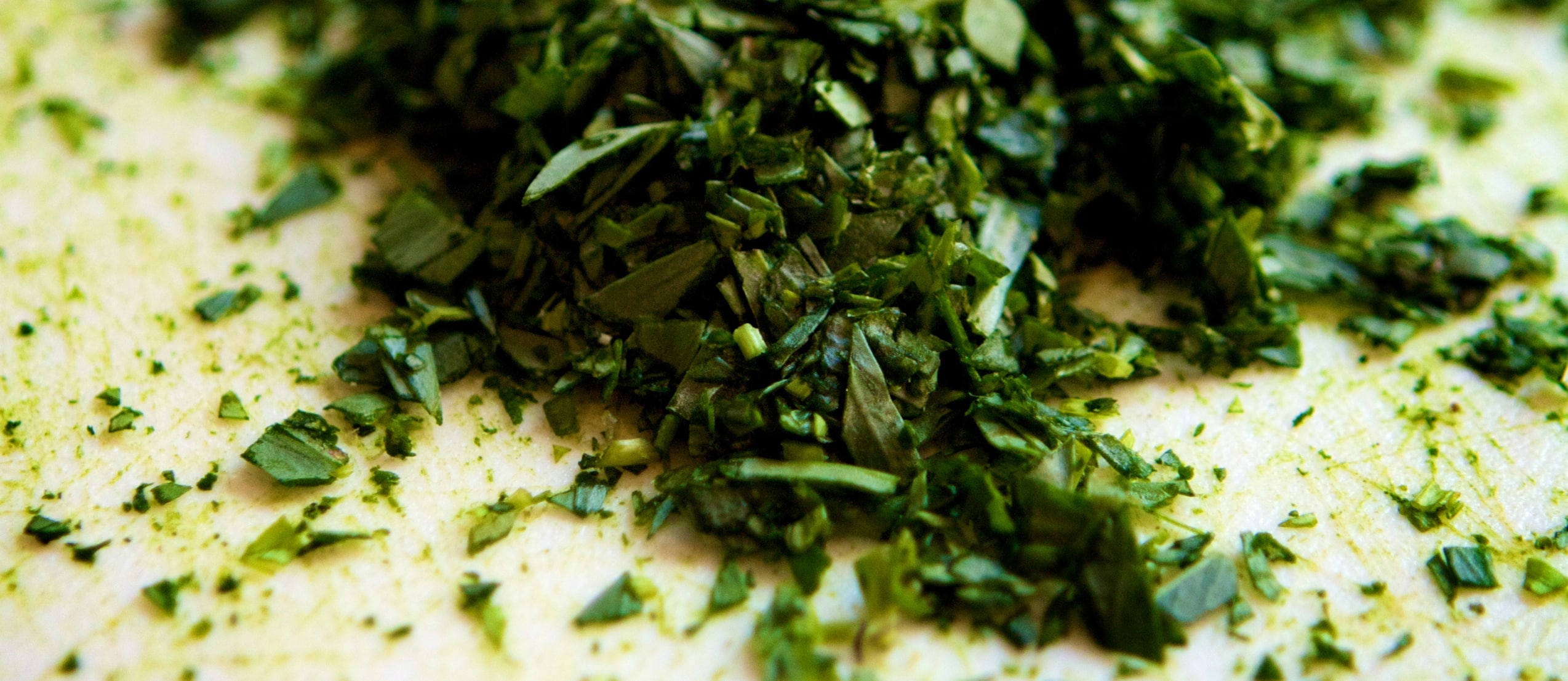Decades ago, concern was raised about some of the components of the herb tarragon. The European Union’s Health & Consumer Protection Scientific Committee on Food concluded that one of the constituents may act as a carcinogen and damage DNA, and so recommended its use be restricted. But they were talking about an isolated chemical from tarragon being used as a flavoring agent in items like alcoholic beverages, canned fish, and fats and oils. As recently as 2011, reviews concluded that consumption of the tarragon leaves themselves should present little or no risk, but that was based on studies done on rats.
A 2012 study made me feel better, suggesting that while the isolated tarragon chemical was toxic to human liver cells, full extracts of the leaves were not, so the whole food may contain compounds that counteract the toxic effects.
I was going to leave it at that and not even do a video about it, but a 2013 study on human white blood cells reopened the question, finding that whole leaf tarragon extracts may have DNA damaging properties after all. I show the results of the comet test in my 3-min video The Safety of Tarragon. For those scratching their heads over the significance of that red smudge, see my explanation of the comet tail test in Cancer, Interrupted: Garlic & Flavonoids.
The researchers postulate that tarragon does indeed appear to be mutagenic, however the current data is “not comprehensive enough to draw definitive conclusions regarding its potential risk to human health with sustained use.” “Nevertheless,” they warn, “future use of tarragon… should be undertaken with an awareness of the… potential toxicity.”
So what have I taken away from all this? Well my family eats tarragon so rarely that it’s probably not going to change our intake at all, but if you’re a tarragon fanatic, I’d suggest moderating your intake and substituting another herb like a dash of fennel or anise seed, or chervil, all of which have a similar licorice-like tarragon taste. The only caveat I could find for chervil is that you probably shouldn’t pick it wild, as it bears a resemblance to an herb known all too well to Socrates (poison hemlock).
For those that missed my last two videos on the safety of common spices, see Update on Cinnamon for Blood Sugar Control and Don’t Eat Too Much Nutmeg.
This new tarragon finding reminds me a bit about the in vitro data raising questions about the safety of avocados (Are Avocados Bad for You?) that thankfully appeared to not translate out in a population study.) Meanwhile, there are a bunch of other reasons to avoid canned fish beyond just the potential tarragon extract toxicity:
- Amalgam Fillings vs. Canned Tuna
- Carcinogenic Putrescine
- Which Brand of Tuna Has the Most Mercury?
- The Effect of Canned Tuna on Future Wages
-Michael Greger, M.D.
PS: If you haven’t yet, you can subscribe to my videos for free by clicking here and watch my full 2012 – 2015 presentations Uprooting the Leading Causes of Death, More than an Apple a Day, From Table to Able, and Food as Medicine.
